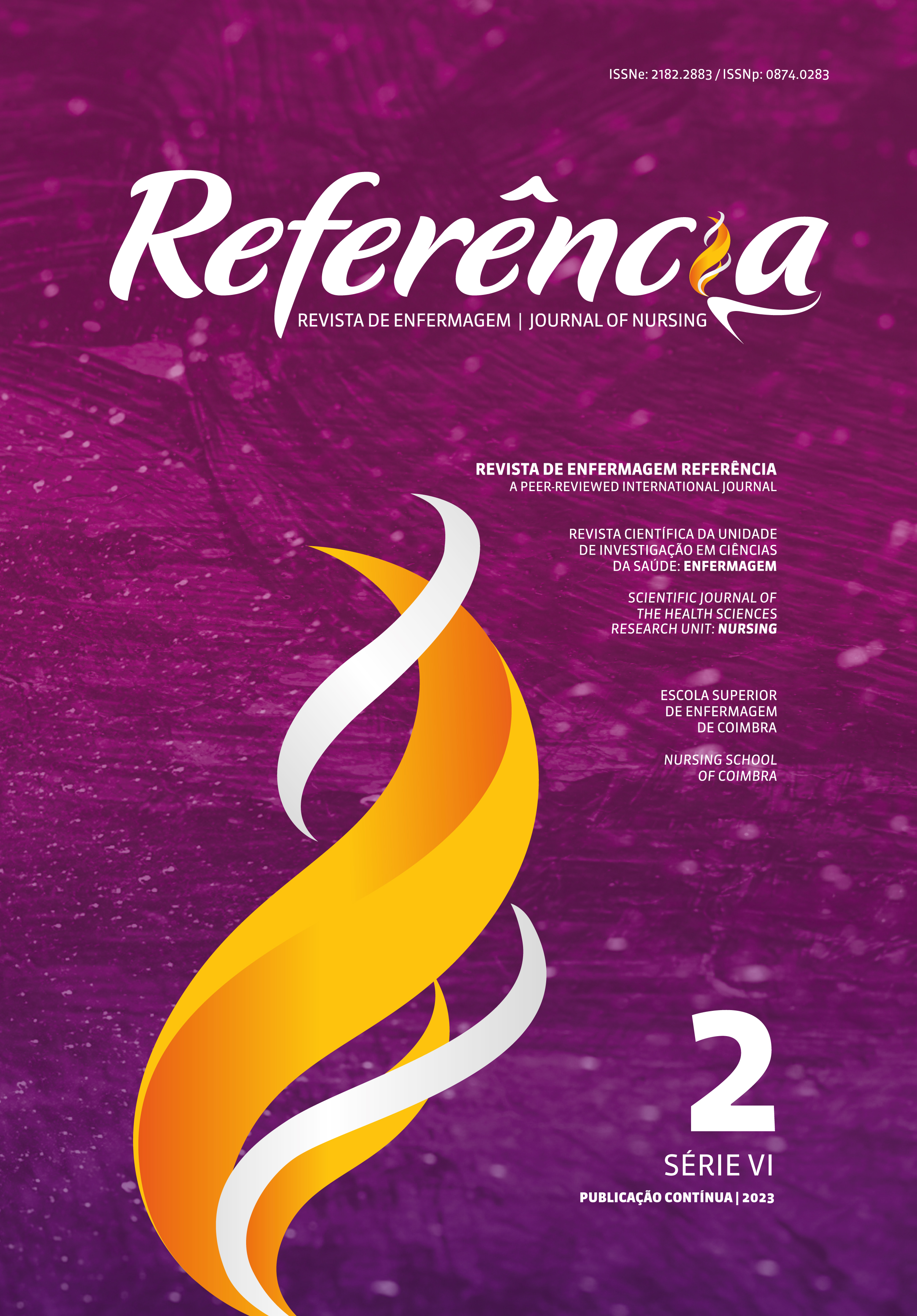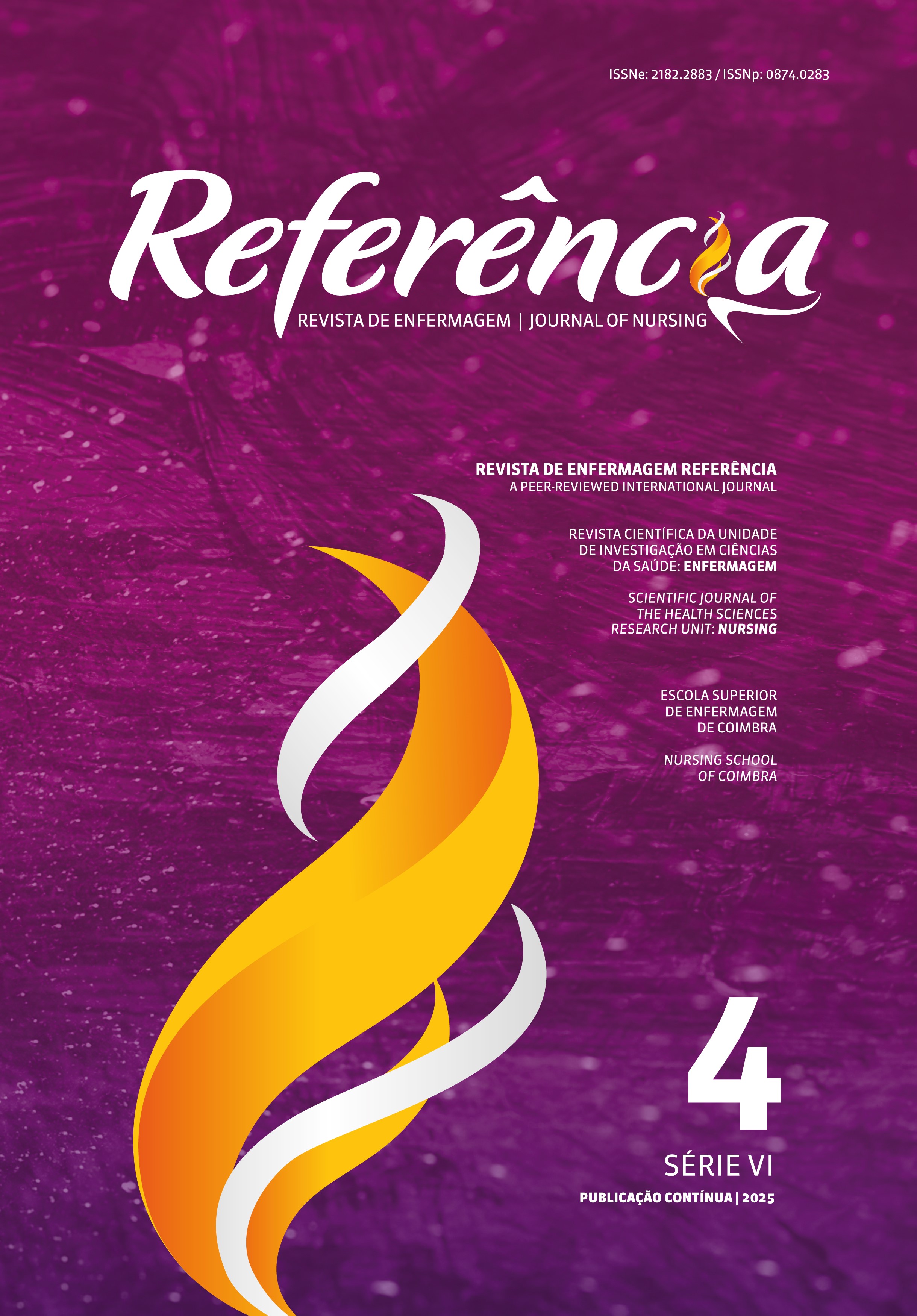Nursing Delirium Screening Scale: Evaluation of psychometric properties in an orthopedic service in Portugal
DOI:
https://doi.org/10.12707/RVI22099Keywords:
postoperative care, nursing, delirium, orthopedics, psychometricsAbstract
Background: The identification of delirium by nurses extremely relevant. The Portuguese version of the Nursing Delirium Screening Scale (Nu-DESC) is a tool that can be used in this setting.
Objective: To evaluate the psychometric properties of the Portuguese version of the Nu-DESC in a surgical context.
Methodology: Methodological study with patients aged 65 years or older with a diagnosis of proximal femur fracture. Three assessment tools were used to analyze the agreement between the results.
Results: In a sample of 81 patients, the sensitivity of the Nu-DESC was 92% compared to the Confusion Assessment Method (CAM) and 91% compared to the application of the DSM-5 criteria. The specificity of the instrument was 98% compared to CAM and 94% compared to the DSM-5. Cronbach’s alpha ranged between 0.86 and 0.89
Conclusion: The evaluation of the psychometric properties of the Nu-DESC in a surgical context confirmed the validity and reliability of the instrument. The results show that the scale has a high sensitivity and specificity for assessing delirium.
Downloads
References
Abelha, F., Veiga, D., Norton, M., Santos, C., & Gaudreau, J. D. (2013). A validac¸a~o do deli´rio em pacientes pós-operatórios Validação da versão portuguesa da Nursing Delirium Screening
Scale na terapia intensiva. Revista Brasileira de Anestesiologia, 63(6), 450-455. https://doi.org/10.1016/j.bjan.2012.09.002
Abreu, W. (2020). Enfermagem de saúde mental e cuidados paliativos a pessoas com demência avançada. In C. Sequeira & F. Sampaio (Coords.), Enfermagem em saúde mental: Diagnósticos e intervenções (pp. 307-312). Lidel. American Psychiatric Association. (2015). Manual de diagnóstico e estatística das perturbações mentais: DSM-5 (5ª ed.). Climepsi Editores.
Bisinotto, F., Silveira, L., Silva, R., & Martins, L. (2017). Delirium pós-operatorio no idoso: Onde estamos? Revista Médica de Minas Gerais, 27(Supl. 2), S52-S66. https://doi.org/10.5935/2238-3182.20170017
Çinar, F., & Aslan, F. E. (2019). Evaluation of postoperative delirium: Validity and reliability of the Nursing Delirium Screening Scale in the Turkish language. Dementia and Geriatric Cognitive Disorders Extra, 9(3), 362-373. https://doi.org/10.1159/000501903
Gaudreau, J. D., Gagnon, P., Harel, F., Tremblay, A., & Roy, M. A. (2005). Fast, systematic, and continuous delirium assessment in hospitalized patients: The nursing delirium screening scale. Journal of Pain and Symptom Management, 29(4), 368-375. https://doi.org/10.1016/j.jpainsymman.2004.07.009
Gonçalves, B., Barros, D. F., & Righy, C. (2018). Delirium prevention and management: Less sedation and keep moving! Journal of Emergency and Critical Care Medicine, 2(5), 47. http://doi.org/10.21037/jeccm.2018.04.04
Ho, M. H., Choi, E. P., Chiu, H.-Y., Hsiao, S.-T., & Traynor, V. (2022). Using the nursing delirium screening scale in assessing postoperative delirium: A meta-regression. Research in Nursing & Health, 45(1), 23-33. https://doi.org/10.1002/nur.22194
Jeon, E. J., & Sohng, K. Y. (2021). Risk factors and clinical outcomes of delirium after hip fracture surgery in Korean older adults: A retrospective study. International Journal of Gerontology, 15(1), 25-29. https://doi.org/10.6890/IJGE.202101_15(1).0005
Mosharaf, P., Alam, K., Ralph, N., & Gow, J. (2022). Hospital costs of post-operative delirium: A systematic review. Journal of Perioperative Nursing, 35(2), 14-26. https://doi.org/10.26550/2209-1092.1165
Nunnally, J. C., & Bernstein, I. H. (1994). Psychometric theory (3ª ed.). McGraw-Hill. Pryor, C., & Clarke, A. (2017). Nursing care for people with delirium superimposed on dementia. Nursing Older People, 29(3), 18-21. https://doi.org/10.7748/nop.2017.e887
Qi, Y-M., Li, Y-J., Zou, J-H., Qiu, X-D., Sun, J., & Rui, Y-F. (2022). Risk factors for postoperative delirium in geriatric patients with hip fracture: A systematic review and meta-analysis. Frontiers in Aging Neuroscience, 14, 960364. https://doi.org/10.3389/fnagi.2022.960364
Rafaela, D., & Cerejeira, J. (2016). Delirium. In H. Firmino, M. R. Simões & J. Cerejeira (Coords.), Saúde mental nas pessoas mais velhas (pp. 291-304). Lidel.
Sampaio, F. M., & Sequeira, C. A. (2013). Tradução e validação do Confusion Assessment Method para a população portuguesa. Revista de Enfermagem Refere^ncia, 3(9), 125-134. https://doi.org/10.12707/RIII12127
Ševcíková, B., Kubešová, H. M., Štureková, L., & Gurkova, E. (2021). Inter-rater reliability of delirium measuring instruments in patients with locomotive apparatus trauma. Kontakt, 23(1),20-24. https://doi.org/10.32725/kont.2021.002
Von Elm, E., Altman, D. G., Egger, M., Pocock, S. J., Gøtzsche, P. C., & Vandenbroucke, J. P. (2007). The Strengthening the Reporting of Observational Studies in Epidemiology (STROBE) statement: Guidelines for reporting observational studies. Annals of Internal Medicine, 147(8), 573-577. https://doi.org/10.7326/0003-4819-147-8-200710160-00010






















